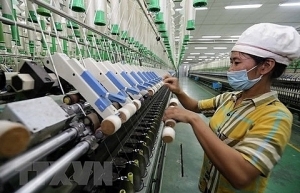Long-term investment is the key to sustainable returns
 |
| Arun Kelshiker, head of Portfolio Strategy at Standard Chartered Private Bank |
In our childhood, we learn some life-skills which we never really forget—skills such as riding a bicycle or swimming. But how often do we learn at a young age how to save and invest and plan our finances for ourselves and our loved ones? Yet, certain financial skills, such as making investment decisions, impact our longer-term life choices.
Starting to invest early is probably one of the most basic financial knowledge one needs to imbibe at an early age. This is because the longer one lets one’s money grow, the bigger it grows. As Albert Einstein famously said: “Compound interest is the eighth wonder of the world and the most powerful force in the universe.”
Once we start early, the next crucial investment idea is the knowledge that capital preservation is key to generating sustainable long-term returns. Yet, knowingly or unknowingly, many of us still find ourselves trying to “time the market” and sometimes “pick up coins in front of the proverbial steam roller” at the cost of ignoring the massive risks that could come to pass. Part of the reason is the FOMO (fear of missing out) factor.
Some of us also have the tendency to cash out too early, or panic and sell during market drawdowns. Doing so, we run the risk of not being invested in markets, thus missing strong market rebounds as and when they happen. As an illustration, for a hypothetical investment in the US S&P500 total return stock index from 1993 to 2018, we analysed the impact of missing out of the twenty-five best performing days. We found that although the S&P500 returned an average 9.8 per cent annually over the 25-year period, by just missing the twenty-five best performing days, the overall performance would have dropped to just 3.9 per cent annually. How confident are we of perfectly timing the market over the longer term?
This is why we believe “boring is beautiful” in the world of investing. For a moderate risk investment portfolio, staying invested for the longer term and targeting annual returns of 4-6 per cent—oftentimes thought of as “boring,” especially within the racy world of chasing double-digit returns—can be the best strategy to offset any temporary drawdowns in one’s portfolio. It is important to remember that a 50 per cent portfolio loss (suffered from pursuing an aggressive investment strategy) would need a 100 per cent portfolio gain to get back to where we started!
“The only free lunch in finance”
Besides compounding and long-term investing, the other core financial idea is “diversification.” Nobel prize-winning economist Harry Markowitz, credited with modern portfolio theory, described diversification as “the only free lunch in finance.” It is the concept of not “putting all your eggs in the same basket,” but spreading the risk across different asset classes. This idea has two major goals: i) to help increase the expected return on investments, while taking less risk and ii) to avoid large losses.
To illustrate this, we compared two portfolios, one allocated purely in equities and the other holding an equal (50/50) split between bonds and equities from 1990 to 2018. We found that while the average annual returns were slightly lower for the 50/50 balanced portfolio (+8.4 per cent), as compared with the100 per cent equity portfolio (+9.4 per cent), the balanced portfolio was far less risky, with much lower annual volatility (9.3 per cent) as compared with the equity portfolio (17.5 per cent). In addition, the 50/50 balanced portfolio also preserved capital far more effectively, as its maximum drawdown (-26.5 per cent) was considerably less than the equity portfolio (-45.8 per cent). This highlights the value of diversifying across asset classes.
Hence, as a guide, a balanced portfolio will generally have a mix of equities, bonds, alternative assets, and cash. The right balance depends on one’s return goals, appetite for risk, and liquidity needs. It is good discipline to rebalance the portfolio once or twice a year so that it stays diversified over time and various allocation weights do not drift from the desired allocation.
It is also helpful to consider lifecycle investing, which suggests that across different stages of our lives, we have different financial needs and risk profiles depending on our situation. In general, the younger we are, the more we are able and willing to take risk on our investments (since we have more years to grow our wealth and recover from drawdowns). As we move through different stages of our life, our financial needs and circumstances often change. Our allocation to risky and non-risky assets would change as a result, to best fit our needs.
Finally, we should be realistic with our return expectations and the risk that goes along with it, given the changing economic landscape and long-term structural pressures on growth and inflation. One way to gauge this is to look at historical investment returns and compare them with forward-looking expectations. As an example, US equities delivered annual average returns of 9.1 per cent from 1993-2017, with annual volatility of 14.5 per cent, while forward-looking expectations, according to studies done by Mercer Consulting, see almost half those annual returns (4.9 per cent) over the next seven years and increased volatility of 18 per cent. Similarly, Emerging Market debt, which historically has delivered annual returns of 9.4 per cent, with volatility of 11.8 per cent, is expected to only deliver 4.1 per cent annual average returns, with volatility of 9.0 per cent over the next seven years.
In summary, the fundamentals of investing relies on a few core principles such as starting as early as possible, staying put for the long-term and applying a well-crafted and disciplined roadmap based on diversification, regular portfolio rebalancing, and tailoring our allocations to our life-cycle needs. Internalising these guidelines should lay a strong foundation for one’s financial future. Ultimately, managing our investment portfolio is similar to learning to ride a bicycle—once we learn, we’ll never forget!
 | Vietnam fastest growing ASEAN economy: SCB Standard Chartered Bank continues to expect Viet Nam’s robust GDP growth of 7 per cent in 2018, driven by strong FDI-supported electronics manufacturing and rising ... |
 | Standard Chartered ups VN growth forecast Standard Chartered Bank expects Vietnam to achieve growth of 7 per cent in 2018, higher than its previous forecast of 6.8 per cent, with all ... |
What the stars mean:
★ Poor ★ ★ Promising ★★★ Good ★★★★ Very good ★★★★★ Exceptional
Related Contents
Latest News
More News
- Securing capital and efficiency for Vietnam’s 2026-2030 growth ambitions (December 17, 2025 | 10:00)
- Energy sector in need of blended finance mechanisms (December 17, 2025 | 09:00)
- Vietnam still has room to mobilise capital for sustainable growth (December 17, 2025 | 08:57)
- Long-term capital seen as key hurdle to green growth (December 16, 2025 | 08:00)
- Gold prices swing amid tax debate and import uncertainty (December 15, 2025 | 18:04)
- Agribank frames bank credit as catalyst for green growth (December 15, 2025 | 17:59)
- Vietnam’s green transition demands collective financial action (December 15, 2025 | 12:00)
- VIR workshop highlights capital and policy for sustainable development (December 15, 2025 | 11:00)
- Promoting digital assets initiative in Vietnam (December 13, 2025 | 09:30)
- Experts flag gaps as national financial strategy under review (December 12, 2025 | 15:13)

 Tag:
Tag:





















 Mobile Version
Mobile Version